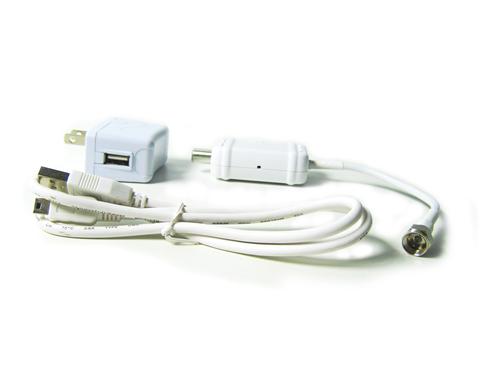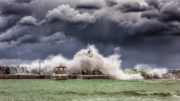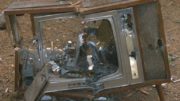Just last week, I ran into two cases where I really, really wanted to sell an amplifier but I just couldn’t. In fact, I would have loved to buy one of these Winegard LNA-100s for myself. It’s just that, sometimes an amplifier isn’t the answer, and there’s nothing much you can do to change that.
Case #1: my personal story
I live about 60 miles away from the broadcast towers give or take. I get decent reception with my outdoor, roof-mounted antenna, but there’s always been one channel that gives me problems. It actually comes in fine on my TV but not on my DVR. I guess the TV’s tuner is a little stronger. In a case like this, the cable runs are short and other channels come in strong. I actually tried an outdoor preamp in a sort of quick-and-dirty configuration to see what would happen.
The answer was, nothing. The signal was just too weak for an amplifier to make a difference in my home system. That’s increasingly common in digital broadcasting setups. A preamp will help compensate for line loss or over-splitting, but it’s not going to magically bring in more channels like it used to in the past.
The shelf effect

Why? Digital signals suffer from something called “the shelf effect.” Simply put, there’s a lot of extra “Stuff” in a digital signal so that if you miss a little bit of it, your TV’s tuner can reconstruct the missing pieces using math. Miss enough pieces, though, and the whole thing falls apart. This is unlike an old analog signal which just got weaker and weaker in a sort of straight line. Once you lose a digital signal, it’s lost. If your TV’s (or DVR’s) tuner isn’t strong enough, the best choice is to change out your antenna for a larger one or put the antenna high up to avoid obstructions. Eventually though, nothing’s going to help.
Case #2: our customer
The other story involved a customer who wanted to extend the signal from his DIRECTV dish about 500 feet. In the past this was at least possible, using a combination of amplifiers and taps connected to a conventional dish. While you can still do it that way, he had a SWM dish and wanted to use one cable. This just isn’t possible; realistically the longest run you’ll get even with a SWM system about 300 feet and you have to sacrifice whole-home (the ability to share programs) once the run is over about 150 feet. You’ll also take a performance hit with long cable runs, as channel changes and remote performance may be worse. I had to tell this customer it couldn’t be done without expensive systems that convert the signal to fiber optics, and even with that you have compromises.
It’s the return path
In the case of DIRECTV SWM, it’s not the digital signal that does you in, it’s what’s called the “return path.” The signal travels back and forth from the receiver to the dish, and amplifiers really only handle one-way communication. Devices have been designed to amplify that return path in the past but it’s proven to cause as much trouble as it solves so really, the best option for DIRECTV SWM is to try to live within the distance limitations.
Unfortunately, a lot of people just think that an amplifier is this magic thing that solves all problems. Folks, there’s no such thing and it’s important to consider all the options before adding an amplifier. Our technicians at Solid Signal can help! Give us a call at 888-233-7563 and we can help explain all the options you have.





